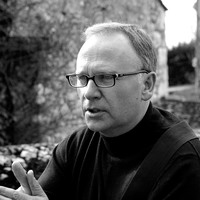
Dr. Phil Harding
www.philhardingmusic.com
Phil Harding joined the music industry at the Marquee Studios in 1973, by the late 1970s he was engineering for The Clash, Killing Joke, Toyah and Matt Bianco.
In the1980s, Phil mixed for Stock, Aitken & Waterman tracks such as ‘You Spin Me Round’ by Dead or Alive followed by records for Mel & Kim, Bananarama, Rick Astley, Depeche Mode, Erasure, Pet Shop Boys and Kylie Minogue.
In the1990s, Phil set up with Ian Curnow (P&E) their own facility at The Strongroom Studio complex. Further hits followed with productions for East 17 (including ‘Stay Another Day’), Deuce, Boyzone, 911 and Let Loose.
Other projects include the book PWL from the Factory Floor (2010, Cherry Red Books) and mixing Sir Cliff Richard’s 2011 album Soulicious. Harding has recently worked for Holly Johnson (Frankie Goes To Hollywood), Samantha Fox, Belinda Carlisle and Curiosity with his new team PJSmusicproductions.com.
Phil is also Co-Chairman of JAMES (Joint Audio Media Education Services) and completed his doctorate at Leeds Beckett University, April 2017. Phil's new book Pop Music Production (2019, Routledge) is available from Routledge / Amazon and Phil's new website:
http://philhardingmusic.com/
Supervisors: Prof. Karl Spracklen - PhD Supervisor and Dr Robert Davis - Leeds Beckett University
Phil Harding joined the music industry at the Marquee Studios in 1973, by the late 1970s he was engineering for The Clash, Killing Joke, Toyah and Matt Bianco.
In the1980s, Phil mixed for Stock, Aitken & Waterman tracks such as ‘You Spin Me Round’ by Dead or Alive followed by records for Mel & Kim, Bananarama, Rick Astley, Depeche Mode, Erasure, Pet Shop Boys and Kylie Minogue.
In the1990s, Phil set up with Ian Curnow (P&E) their own facility at The Strongroom Studio complex. Further hits followed with productions for East 17 (including ‘Stay Another Day’), Deuce, Boyzone, 911 and Let Loose.
Other projects include the book PWL from the Factory Floor (2010, Cherry Red Books) and mixing Sir Cliff Richard’s 2011 album Soulicious. Harding has recently worked for Holly Johnson (Frankie Goes To Hollywood), Samantha Fox, Belinda Carlisle and Curiosity with his new team PJSmusicproductions.com.
Phil is also Co-Chairman of JAMES (Joint Audio Media Education Services) and completed his doctorate at Leeds Beckett University, April 2017. Phil's new book Pop Music Production (2019, Routledge) is available from Routledge / Amazon and Phil's new website:
http://philhardingmusic.com/
Supervisors: Prof. Karl Spracklen - PhD Supervisor and Dr Robert Davis - Leeds Beckett University
less
Related Authors
Derek B Scott
University of Leeds
Simon Zagorski-Thomas
University of West London
Eliot Bates
Graduate Center of the City University of New York
Simon Werrett
University College London
Katherine Butler Schofield
King's College London
Gareth Dylan D Smith
Boston University
Ruben López-Cano
Escola Superior de Música de Catalunya
David Seamon
Kansas State University
Egil Bakka
Norwegian University of Science and Technology
Adam M Croom
Case Western Reserve University
InterestsView All (11)
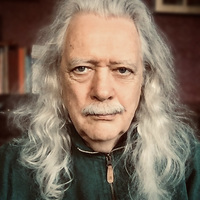

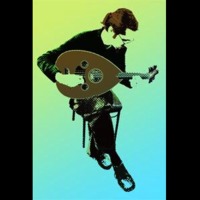


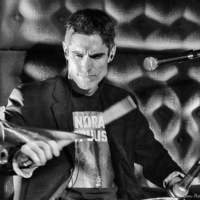
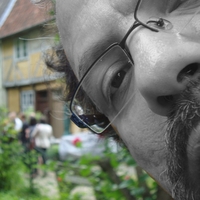

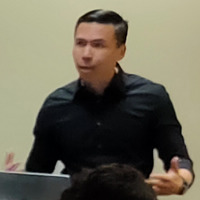
Uploads
Books by Dr. Phil Harding
Included here are practical resources such as recording studio equipment lists, producer business deal examples and a 12-step mixing technique, where Harding expands upon previously released material to explain how ‘Stay Another Day’ by East 17 changed his approach to mixing forever. However, it is important to note that Phil almost downplays his involvement within his career. At no point is he centre stage, instead he humbly discusses his position within the greater scheme of events. Pop Music Production offers cutting-edge analysis of a genre rarely afforded academic attention.
This book is aimed at lecturers and students in the subject fields of Music Production, Audio Engineering, Music Technology, Popular Songwriting Studies and Popular Music Culture. It is suitable for all levels of study from FE students through to PhD researchers. Pop Music Production is also designed as a follow up to Phil’s first book PWL from the Factory Floor (2010, Cherry Red Books), a memoir of his time working with 1980s Pop Production and Songwriting powerhouse; Stock, Aitken & Waterman at PWL Studios.
www.philhardingmusic.com
www.pjsmusicproductions.com
www.pwlfromthefactoryfloor.com
PWL From The Factory Floor – Expanded Edition
Phil Harding
Extent 616 pages
Size 156mm x 234mm
RRP £17.99
Published 22 November 2010
ISBN 978–1901447521
Binding Paperback
Cat Number CRBOOK52
Publisher Cherry Red Books, United Kingdom
Official website http://www.pwlfromthefactoryfloor.com
Amazon link http://www.amazon.co.uk/exec/obidos/ASIN/1901447529/h3w-21
Associated release Forthcoming tie-in Phil Harding Mixes Double Compilation CD
ABC | RICK ASTLEY | BANANARAMA | BAND AID II | BASIA | CHIC | CLIMIE FISHER | THE COOL NOTES | DEAD OR ALIVE | HAZELL DEAN | DEPECHE MODE | DIVINE | DOLLAR | JASON DONOVAN | EIGHTH WONDER | ERASURE | FIVE STAR | THE FOUR TOPS | LONNIE GORDON | DEBBIE HARRY | THELMA HOUSTON | IMAGINATION | THE JACKSON FIVE | JESUS JONES | MATT BIANCO | MEL & KIM | KYLIE MINOGUE | GARY MOORE | NITZER EBB | PET SHOP BOYS | PRINCESS | CLIFF RICHARD | DIANA ROSS | SINITTA | JIMMY SOMERVILLE | SONIA | JERMAINE STEWART | DONNA SUMMER | THE THREE DEGREES | T'PAU | JOHN TRAVOLTA & OLIVIA NEWTON-JOHN | VOICE OF THE BEEHIVE
From tea boy to internationally-successful record producer, Phil Harding’s extraordinary music industry career spans over 30 years – from recording The Clash in the 70s, to producing number ones for East 17 and Boyzone in the 90s. Phil played a key role at PWL Studios (Pete Waterman’s vision for a ‘British Motown’) alongside the legendary Stock, Aitken and Waterman production team, whose Hit Factory productions and mixes sold over 30 million units around the world via a surprisingly diverse CV of artists (including those above). It also produced early hits for (amongst others) one highly-determined, unknown industry newcomer, Simon Cowell.
Phil Harding’s experience extended right from ‘the top’ of the organisation (mixing many classic SAW hits), down to ‘the bottom’ (establishing the studio and training up-and-coming engineers with state-of-the-art technology and techniques), as well as covering the creative, business (and diplomatic!) aspects of being a critically-acclaimed producer in his own right (together with Ian Curnow) and developing their own music industry profile, artists and client base, under the management of Pete Waterman.
Highlights include Phil’s behind-the-scenes journey through the eventful rise (and fall) of PWL, commentaries on many classic PWL mixes, in-depth interviews on working with specific key artists of the time, a guide to the studio building, a case study of the mixing of a No. 1 single (Kylie’s ‘Hand On Your Heart’), Phil’s PWL Discography - a comprehensive guide to his many hundreds of releases (with details, for the first time, on many unreleased PWL projects), and a new Harding/Curnow interview looking back on their time at PWL.
The book also contains an in-depth technical section, setting out a definitive description and history of music technology/recording equipment as used at PWL Studios during the 1980s, with a thorough explanation and insight given into the SAW/PWL recording/mixing techniques. Along with the inclusion of many previously-unseen photographs, ‘PWL From The Factory Floor - Expanded Edition’ is a must-read for 80s, club, dance and pop devotees, contemporary music followers, studio technicians and creators and those with any interest in the extreme highs and lows that only pop music can provide.
Phil Harding is now a regular speaker and guest lecturer at Universities and Colleges around the UK, and is Co-Chairman of the Joint Audio and Media Education Service (JAMES), the Educational representative body of the MPG (Music Producers Guild) and the APRS (Association of Professional Recording Services).
PHIL HARDING
PWL from the Factory Floor
This is an important book for many reasons. It provides a fascinating insider account of a key moment in the history of British pop and dance music. It has the best account I’ve ever read of what a mixer does and why they do it. It charts the impact of changing technology on studio practice while showing how that technology was itself been shaped by the endless imaginative verve of producers and engineers. And, above all, it illustrates brilliantly how in popular music the creative process is essentially collaborative, involves a fusion of aesthetic, commercial and technical judgements that is impossible to understand without access to the kind of detailed analysis that Phil Harding provides. This should be on the reading list for every course on music technology, music performance and music business.
Simon Frith
Tovey Professor of Music
University of Edinburgh
Published Book Chapters by Dr. Phil Harding
Desktop Production and Commerciality: Phil Harding
Introduction: Transformation and process
The analogue methodologies derived from the 1970s and 1980s commercial pop and rock music can be identified in current characteristics of commercial pop that are ascribable to processing and effects for mixing ‘In The Box’ - ITB (Paterson, 2017: Burgess, 2014). Current desktop music production technology allows the creative technologist to access emulations of classic and popular analogue hardware processors (Burgess, 2014) in the digital domain with an ease that was only a dream to engineers and producers like myself in the 1980s and 1990s. Pop music songwriting and production teams are now more frequently part of a larger creative collective (Hennion, 1990) in creating a musical product.
This chapter explores the creative production and mixing processing tools (Moylan, 2015) found in systems available for desktop music production today. Drawing upon a series of interviews and data gathered during an extended ethnographic and auto ethnographic study, this chapter presents my previous analogue workflow in the pop music domain of the 1970s, 1980s and 1990s and examines the current output requirements to satisfy commercial music clients at various stages of the commercial pop production and mixing process.
Evidence also suggests that for individuals to successfully participate in the field and domain of commercial pop music they will need to display a genuine creative ‘love’ of the genre’s culture and technology. I will set out a desktop production ‘Service Model For The Creation of Commercial Pop Music’ (Harding, 2017).
This chapter begins with an auto-ethnographic reflection of my working practices as a producer, engineer and mixer from the 1970s to the end of the 1990s. I will then explore the work that has come since and the choices available to industry practitioners today. To give a general overview of my current working practices: I assign ITB digital processing and effects during the recording and mix process of commercial pop music projects that are still based on analogue working practices from the 1970s to 1990s. In this chapter, I distinguish between ‘Top Down’ and ‘Bottom Up’ approaches to mixing (Harding 2017). Top down refers to starting a mix with the lead vocals and then working ‘down’ through the arrangement to the drums. Bottom up mixing begins with the drums and ends with the vocals. e latter method, in my experience, has been the traditional routine in rock, pop and dance music genres since the 1970s.
Music production has changed enormously over the last thirty to forty years. Today’s technology now allows anyone to make high-quality recordings at home. That said, the analogue technologies and techniques of record making from the pre- digital era are still with us and still inform many of the processes used today. It is important for new and current practitioners to be aware of the contextual background of the music production process as it once was as well as of the current possibilities. Whilst commercial desktop production differs from ‘traditional’ recording studio processes, many production parameter decisions will remain, such as arrangement, instrumentation, tempo/time signature/groove and performance quality. Hepworth- Sawyer and Golding (2011) rightly emphasize that ‘these four overarching parameters can offer a great deal of scope when altered’ and are equally important in commercial desktop production. This chapter will put aside those arrangement and musical considerations and concentrate on the characteristics of commercial pop that are ascribable to processing and effects.
There are clear and definable differences, in my view, between recording and mixing for acts such as The Clash, Killing Joke and Toyah Wilcox, which I did in the late 1970s/ early 1980s compared to the ‘stacking’ process of recording for the acts I worked at PWL Studios (PWL) throughout the 1980s. The recording routine of producers Stock, Aitken and Waterman (SAW) became deliberately aimed at supplying an abundance of keyboard and programmed orchestral overdubs as commercial hooks and ‘spotlight’ sounds for the mix engineers to focus upon. Pete Waterman always attended the mixing sessions at PWL, and it became an easier approach for the production team to supply too much instrumentation to support the vocal hooks rather than too little. Pete Waterman and the PWL engineers were masters of knowing what to leave out rather than knowing what to request from SAW to add in. at same routine continued for Ian Curnow and myself producing boy bands such as East 17 and Boyzone in the 1990s. Therefore we could view an ideal commercial desktop production mix as something that has been deliberately overloaded with too many overdubs to allow the final mix to be sculpted by the mix engineer into the ideal commercial sound for current national and commercial radio.
The complex narrative for acts such as The Clash and Killing Joke was somewhat opposite, only overdubs that had been creatively scrutinized by the band members in the rehearsal rooms and then the recording studio were recorded – and nothing more. In many ways that makes the mixing process easier for these types of acts.
https://www.bloomsbury.com/uk/the-bloomsbury-handbook-of-music-production-9781501334023/
Abstract
Producers in pop and dance music genres have a significantly different role to music producers in other music genres such as rock (Frith in Frith & Zagor- ski-Thomas: 2012). A prominent difference is that pop music producers are often part of a production team that involves direct collaboration and participation with songwriters, programmers, musicians, artists, record company A&R executives and managers. Pop music songwriting and production teams are therefore more frequently part of a larger creative collective (Hennion: 1990) in creating a musical product. This historical study introduces the rec- ord producer as ‘team leader’ and the creative production workflow at P&E Music Studios located within the Strongroom Studio complex in London during the 1990s. It investigates the ways in which the production team worked within the creative system of pop-music making and presents the pop music ‘Service Model’, which illustrates the various stages of the commercial pop songwriting and production process at P&E during the 1990s.
The following study explores the creative co-production workflow system of SAW at Pete Waterman Ltd. (PWL) Studios during the 1980s, focusing on the agency and influence of Pete Waterman within the process as the production team worked within the creative system of pop-music making.
Phil Harding
This chapter is an ethnographic reflection of my working practices as a producer, engineer and mixer in the 1990s. In what follows, I suggest that the methods I used then are still useful in the context of modern popular music mixing. To do this, I conceptualize mixing in two different ways, specifically as a ‘top-down’ and a ‘bottom-up’ creative practice. ‘Top- down’ in this concept refers to starting a mix with the lead vocals and then working ‘down’ through the arrangement to the drums. ‘Bottom-up’ mixing refers to the opposite. Bottom-up mixing begins with the drums and ends with the vocals. The latter method, in my experience, has been the traditional routine in rock, pop and dance music genres since the 1970s.
“It will be all right at the mix” and “it’s all in the mix” (Cauty and Drummond, 1988, 1998, p.117) are phrases I’ve heard in recording studios since I started making records in the mid-1970s. By this time, a multi- track recording, requiring a final stereo mixdown session, was already a very well established part of the production process. The mixing process is barely touched upon in The Manual (How to Have a Number One the Easy Way) (Cauty and Drummond, 1988) by Jimmy Cauty and Bill Drummond of The KLF, first published in 1998, and to be honest I do not go into the 1980s Stock Aitken and Waterman (SAW) mix process in any great detail in my own book PWL From the Factory Floor (Harding, 2010). William Moylan (2015) notes that “people in the audio industry need to listen to and evaluate sound”. I would agree with Moylan and other academics that prolonged periods of critical listening “can be used to evaluate sound quality and timbre” (Moylan, 2015:186). What is timbre in music? Zagorski-Thomas (2014) notes that timbre is “a function of the nature of the object making the sound as well as the nature of the type of activity” (Zagorski-Thomas, 2014, p.65). Ultimately, the mixing process is something that needs to be performed, practiced and mastered by every creative in this time of diversity. Composers and musicians, as well as engineers and producers, will find themselves in the mixing seat due to budget or time constraints in an age where budgets for all types of recorded music and audio have fallen by 25% or more since the 1990s. The following 12-step program still serves me well after forty years of experience as an industry practitioner and is a framework for others to experiment with.
Conference Presentations by Dr. Phil Harding
The following study explores the creative production workflow system at Pete Waterman Ltd. (PWL) Studios during the 1980s and investigates the way in which the production team worked within a creative system of pop-music making. Drawing upon a series of interviews and data gathered during an extended ethnographic and auto ethnographic study, this paper presents the pop music ‘service’ model, which underlines collectivist rather than individualist thinking and illustrates the various stages of the commercial pop songwriting and production process at PWL during the 1980s.
Papers by Dr. Phil Harding
Included here are practical resources such as recording studio equipment lists, producer business deal examples and a 12-step mixing technique, where Harding expands upon previously released material to explain how ‘Stay Another Day’ by East 17 changed his approach to mixing forever. However, it is important to note that Phil almost downplays his involvement within his career. At no point is he centre stage, instead he humbly discusses his position within the greater scheme of events. Pop Music Production offers cutting-edge analysis of a genre rarely afforded academic attention.
This book is aimed at lecturers and students in the subject fields of Music Production, Audio Engineering, Music Technology, Popular Songwriting Studies and Popular Music Culture. It is suitable for all levels of study from FE students through to PhD researchers. Pop Music Production is also designed as a follow up to Phil’s first book PWL from the Factory Floor (2010, Cherry Red Books), a memoir of his time working with 1980s Pop Production and Songwriting powerhouse; Stock, Aitken & Waterman at PWL Studios.
www.philhardingmusic.com
www.pjsmusicproductions.com
www.pwlfromthefactoryfloor.com
PWL From The Factory Floor – Expanded Edition
Phil Harding
Extent 616 pages
Size 156mm x 234mm
RRP £17.99
Published 22 November 2010
ISBN 978–1901447521
Binding Paperback
Cat Number CRBOOK52
Publisher Cherry Red Books, United Kingdom
Official website http://www.pwlfromthefactoryfloor.com
Amazon link http://www.amazon.co.uk/exec/obidos/ASIN/1901447529/h3w-21
Associated release Forthcoming tie-in Phil Harding Mixes Double Compilation CD
ABC | RICK ASTLEY | BANANARAMA | BAND AID II | BASIA | CHIC | CLIMIE FISHER | THE COOL NOTES | DEAD OR ALIVE | HAZELL DEAN | DEPECHE MODE | DIVINE | DOLLAR | JASON DONOVAN | EIGHTH WONDER | ERASURE | FIVE STAR | THE FOUR TOPS | LONNIE GORDON | DEBBIE HARRY | THELMA HOUSTON | IMAGINATION | THE JACKSON FIVE | JESUS JONES | MATT BIANCO | MEL & KIM | KYLIE MINOGUE | GARY MOORE | NITZER EBB | PET SHOP BOYS | PRINCESS | CLIFF RICHARD | DIANA ROSS | SINITTA | JIMMY SOMERVILLE | SONIA | JERMAINE STEWART | DONNA SUMMER | THE THREE DEGREES | T'PAU | JOHN TRAVOLTA & OLIVIA NEWTON-JOHN | VOICE OF THE BEEHIVE
From tea boy to internationally-successful record producer, Phil Harding’s extraordinary music industry career spans over 30 years – from recording The Clash in the 70s, to producing number ones for East 17 and Boyzone in the 90s. Phil played a key role at PWL Studios (Pete Waterman’s vision for a ‘British Motown’) alongside the legendary Stock, Aitken and Waterman production team, whose Hit Factory productions and mixes sold over 30 million units around the world via a surprisingly diverse CV of artists (including those above). It also produced early hits for (amongst others) one highly-determined, unknown industry newcomer, Simon Cowell.
Phil Harding’s experience extended right from ‘the top’ of the organisation (mixing many classic SAW hits), down to ‘the bottom’ (establishing the studio and training up-and-coming engineers with state-of-the-art technology and techniques), as well as covering the creative, business (and diplomatic!) aspects of being a critically-acclaimed producer in his own right (together with Ian Curnow) and developing their own music industry profile, artists and client base, under the management of Pete Waterman.
Highlights include Phil’s behind-the-scenes journey through the eventful rise (and fall) of PWL, commentaries on many classic PWL mixes, in-depth interviews on working with specific key artists of the time, a guide to the studio building, a case study of the mixing of a No. 1 single (Kylie’s ‘Hand On Your Heart’), Phil’s PWL Discography - a comprehensive guide to his many hundreds of releases (with details, for the first time, on many unreleased PWL projects), and a new Harding/Curnow interview looking back on their time at PWL.
The book also contains an in-depth technical section, setting out a definitive description and history of music technology/recording equipment as used at PWL Studios during the 1980s, with a thorough explanation and insight given into the SAW/PWL recording/mixing techniques. Along with the inclusion of many previously-unseen photographs, ‘PWL From The Factory Floor - Expanded Edition’ is a must-read for 80s, club, dance and pop devotees, contemporary music followers, studio technicians and creators and those with any interest in the extreme highs and lows that only pop music can provide.
Phil Harding is now a regular speaker and guest lecturer at Universities and Colleges around the UK, and is Co-Chairman of the Joint Audio and Media Education Service (JAMES), the Educational representative body of the MPG (Music Producers Guild) and the APRS (Association of Professional Recording Services).
PHIL HARDING
PWL from the Factory Floor
This is an important book for many reasons. It provides a fascinating insider account of a key moment in the history of British pop and dance music. It has the best account I’ve ever read of what a mixer does and why they do it. It charts the impact of changing technology on studio practice while showing how that technology was itself been shaped by the endless imaginative verve of producers and engineers. And, above all, it illustrates brilliantly how in popular music the creative process is essentially collaborative, involves a fusion of aesthetic, commercial and technical judgements that is impossible to understand without access to the kind of detailed analysis that Phil Harding provides. This should be on the reading list for every course on music technology, music performance and music business.
Simon Frith
Tovey Professor of Music
University of Edinburgh
Desktop Production and Commerciality: Phil Harding
Introduction: Transformation and process
The analogue methodologies derived from the 1970s and 1980s commercial pop and rock music can be identified in current characteristics of commercial pop that are ascribable to processing and effects for mixing ‘In The Box’ - ITB (Paterson, 2017: Burgess, 2014). Current desktop music production technology allows the creative technologist to access emulations of classic and popular analogue hardware processors (Burgess, 2014) in the digital domain with an ease that was only a dream to engineers and producers like myself in the 1980s and 1990s. Pop music songwriting and production teams are now more frequently part of a larger creative collective (Hennion, 1990) in creating a musical product.
This chapter explores the creative production and mixing processing tools (Moylan, 2015) found in systems available for desktop music production today. Drawing upon a series of interviews and data gathered during an extended ethnographic and auto ethnographic study, this chapter presents my previous analogue workflow in the pop music domain of the 1970s, 1980s and 1990s and examines the current output requirements to satisfy commercial music clients at various stages of the commercial pop production and mixing process.
Evidence also suggests that for individuals to successfully participate in the field and domain of commercial pop music they will need to display a genuine creative ‘love’ of the genre’s culture and technology. I will set out a desktop production ‘Service Model For The Creation of Commercial Pop Music’ (Harding, 2017).
This chapter begins with an auto-ethnographic reflection of my working practices as a producer, engineer and mixer from the 1970s to the end of the 1990s. I will then explore the work that has come since and the choices available to industry practitioners today. To give a general overview of my current working practices: I assign ITB digital processing and effects during the recording and mix process of commercial pop music projects that are still based on analogue working practices from the 1970s to 1990s. In this chapter, I distinguish between ‘Top Down’ and ‘Bottom Up’ approaches to mixing (Harding 2017). Top down refers to starting a mix with the lead vocals and then working ‘down’ through the arrangement to the drums. Bottom up mixing begins with the drums and ends with the vocals. e latter method, in my experience, has been the traditional routine in rock, pop and dance music genres since the 1970s.
Music production has changed enormously over the last thirty to forty years. Today’s technology now allows anyone to make high-quality recordings at home. That said, the analogue technologies and techniques of record making from the pre- digital era are still with us and still inform many of the processes used today. It is important for new and current practitioners to be aware of the contextual background of the music production process as it once was as well as of the current possibilities. Whilst commercial desktop production differs from ‘traditional’ recording studio processes, many production parameter decisions will remain, such as arrangement, instrumentation, tempo/time signature/groove and performance quality. Hepworth- Sawyer and Golding (2011) rightly emphasize that ‘these four overarching parameters can offer a great deal of scope when altered’ and are equally important in commercial desktop production. This chapter will put aside those arrangement and musical considerations and concentrate on the characteristics of commercial pop that are ascribable to processing and effects.
There are clear and definable differences, in my view, between recording and mixing for acts such as The Clash, Killing Joke and Toyah Wilcox, which I did in the late 1970s/ early 1980s compared to the ‘stacking’ process of recording for the acts I worked at PWL Studios (PWL) throughout the 1980s. The recording routine of producers Stock, Aitken and Waterman (SAW) became deliberately aimed at supplying an abundance of keyboard and programmed orchestral overdubs as commercial hooks and ‘spotlight’ sounds for the mix engineers to focus upon. Pete Waterman always attended the mixing sessions at PWL, and it became an easier approach for the production team to supply too much instrumentation to support the vocal hooks rather than too little. Pete Waterman and the PWL engineers were masters of knowing what to leave out rather than knowing what to request from SAW to add in. at same routine continued for Ian Curnow and myself producing boy bands such as East 17 and Boyzone in the 1990s. Therefore we could view an ideal commercial desktop production mix as something that has been deliberately overloaded with too many overdubs to allow the final mix to be sculpted by the mix engineer into the ideal commercial sound for current national and commercial radio.
The complex narrative for acts such as The Clash and Killing Joke was somewhat opposite, only overdubs that had been creatively scrutinized by the band members in the rehearsal rooms and then the recording studio were recorded – and nothing more. In many ways that makes the mixing process easier for these types of acts.
https://www.bloomsbury.com/uk/the-bloomsbury-handbook-of-music-production-9781501334023/
Abstract
Producers in pop and dance music genres have a significantly different role to music producers in other music genres such as rock (Frith in Frith & Zagor- ski-Thomas: 2012). A prominent difference is that pop music producers are often part of a production team that involves direct collaboration and participation with songwriters, programmers, musicians, artists, record company A&R executives and managers. Pop music songwriting and production teams are therefore more frequently part of a larger creative collective (Hennion: 1990) in creating a musical product. This historical study introduces the rec- ord producer as ‘team leader’ and the creative production workflow at P&E Music Studios located within the Strongroom Studio complex in London during the 1990s. It investigates the ways in which the production team worked within the creative system of pop-music making and presents the pop music ‘Service Model’, which illustrates the various stages of the commercial pop songwriting and production process at P&E during the 1990s.
The following study explores the creative co-production workflow system of SAW at Pete Waterman Ltd. (PWL) Studios during the 1980s, focusing on the agency and influence of Pete Waterman within the process as the production team worked within the creative system of pop-music making.
Phil Harding
This chapter is an ethnographic reflection of my working practices as a producer, engineer and mixer in the 1990s. In what follows, I suggest that the methods I used then are still useful in the context of modern popular music mixing. To do this, I conceptualize mixing in two different ways, specifically as a ‘top-down’ and a ‘bottom-up’ creative practice. ‘Top- down’ in this concept refers to starting a mix with the lead vocals and then working ‘down’ through the arrangement to the drums. ‘Bottom-up’ mixing refers to the opposite. Bottom-up mixing begins with the drums and ends with the vocals. The latter method, in my experience, has been the traditional routine in rock, pop and dance music genres since the 1970s.
“It will be all right at the mix” and “it’s all in the mix” (Cauty and Drummond, 1988, 1998, p.117) are phrases I’ve heard in recording studios since I started making records in the mid-1970s. By this time, a multi- track recording, requiring a final stereo mixdown session, was already a very well established part of the production process. The mixing process is barely touched upon in The Manual (How to Have a Number One the Easy Way) (Cauty and Drummond, 1988) by Jimmy Cauty and Bill Drummond of The KLF, first published in 1998, and to be honest I do not go into the 1980s Stock Aitken and Waterman (SAW) mix process in any great detail in my own book PWL From the Factory Floor (Harding, 2010). William Moylan (2015) notes that “people in the audio industry need to listen to and evaluate sound”. I would agree with Moylan and other academics that prolonged periods of critical listening “can be used to evaluate sound quality and timbre” (Moylan, 2015:186). What is timbre in music? Zagorski-Thomas (2014) notes that timbre is “a function of the nature of the object making the sound as well as the nature of the type of activity” (Zagorski-Thomas, 2014, p.65). Ultimately, the mixing process is something that needs to be performed, practiced and mastered by every creative in this time of diversity. Composers and musicians, as well as engineers and producers, will find themselves in the mixing seat due to budget or time constraints in an age where budgets for all types of recorded music and audio have fallen by 25% or more since the 1990s. The following 12-step program still serves me well after forty years of experience as an industry practitioner and is a framework for others to experiment with.
The following study explores the creative production workflow system at Pete Waterman Ltd. (PWL) Studios during the 1980s and investigates the way in which the production team worked within a creative system of pop-music making. Drawing upon a series of interviews and data gathered during an extended ethnographic and auto ethnographic study, this paper presents the pop music ‘service’ model, which underlines collectivist rather than individualist thinking and illustrates the various stages of the commercial pop songwriting and production process at PWL during the 1980s.